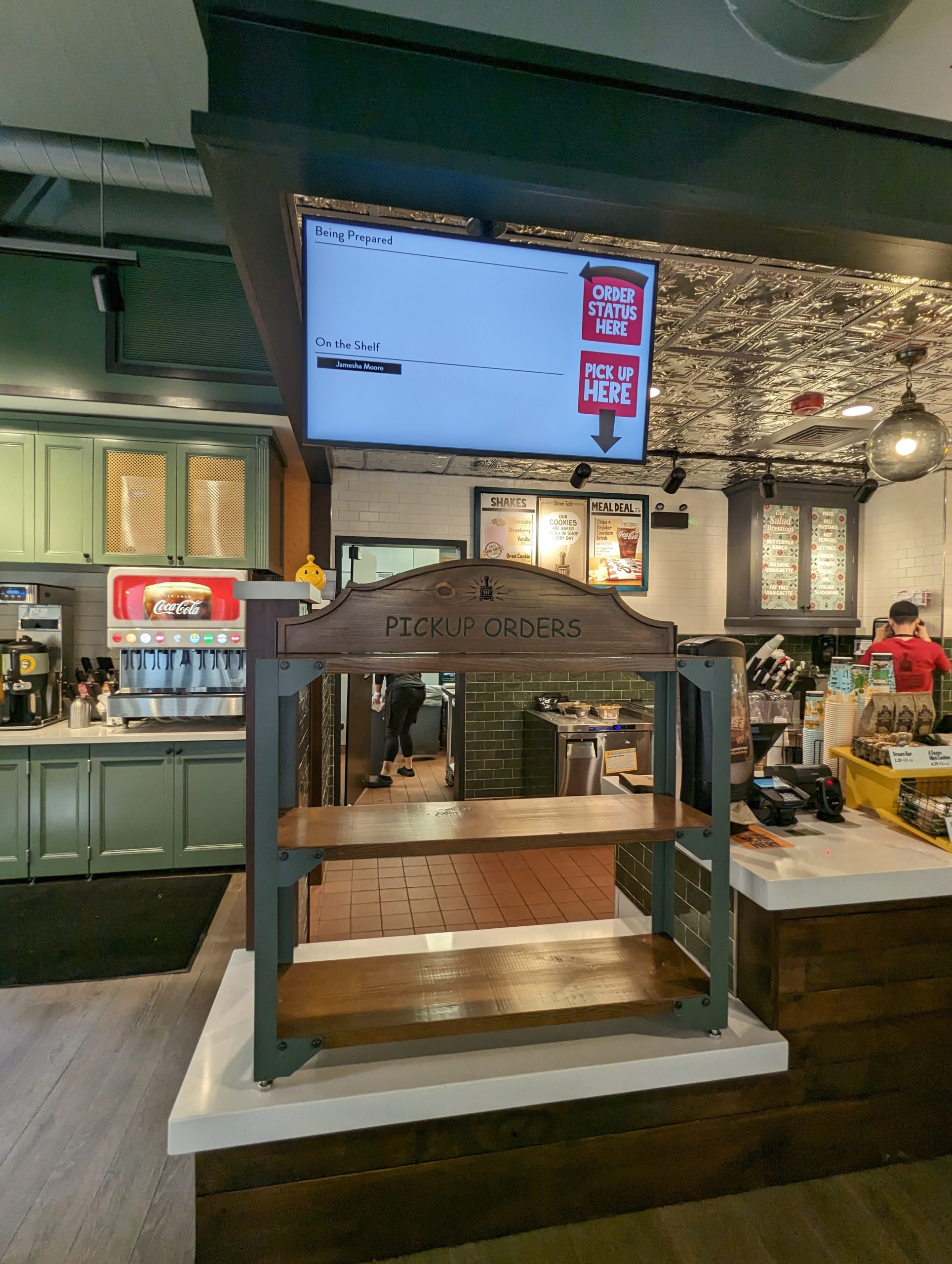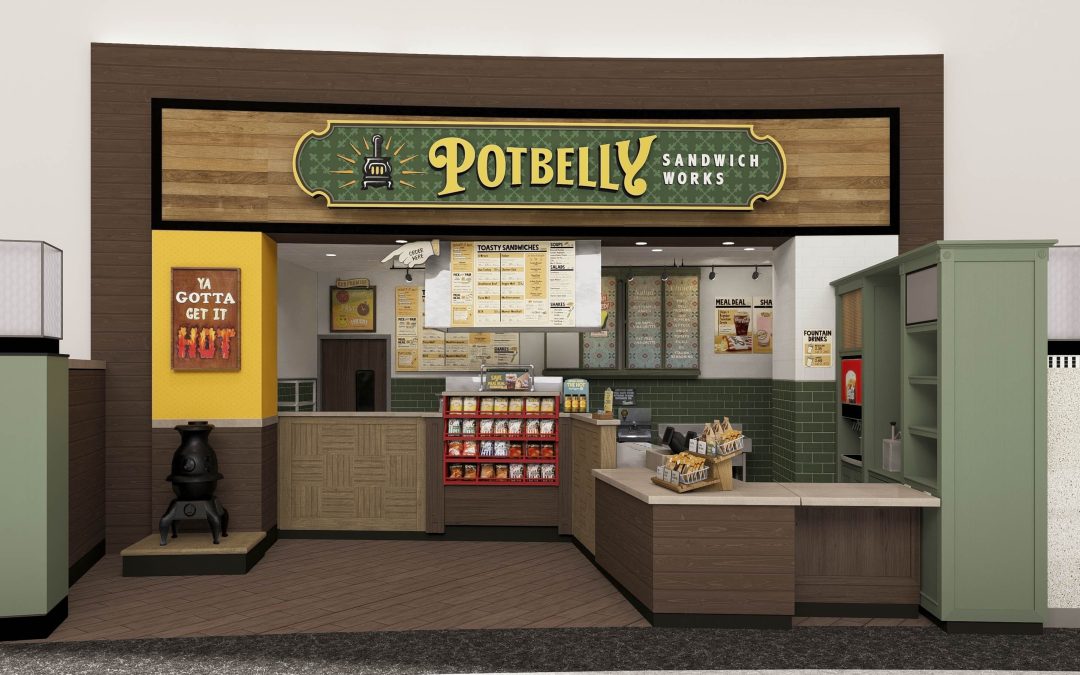
Adam Noyes, Potbelly COO.
For a fast-casual chain that offers old-fashioned fare, Potbelly also has a taste for the modern. Last year, it launched Potbelly Digital Kitchen, an in-store tech platform that optimizes online order processing. And now it’s toasting the bread even more with a sleek, new digital-forward store prototype.
To hear Potbelly Chief Operating Officer Adam Noyes describe it, the decision was one of necessity.
“Historically most of our business was in our in-dining experience,” he said in an interview, “but today 40 percent of our occasions are digital. That changes the dynamic.”
And the floor plans. The new design is 500 square feet smaller than its traditional stores, with the seat count going from 50 to 60 to 36. The fresh landscape includes improved pickup and beverage stations, a digital screen that communicates the status of an order, drive-thrus that can accommodate both consumers and third-party delivery drivers. For Potbelly, small is the new supersize.

Potbelly’s new digital pickup shelf.
Yet what’s most impressive isn’t the digital synchronization or the colorful signage. It’s the fact that the new prototype got developed and signed off on so quickly. This is a half-billion dollar franchise with more than 400 stores. That’s a lot of stakeholders. And this is a big endeavor. But Potbelly read the room and moved decisively, which may prove to be its most impressive throughput of all.
“We did some studies into the usage of our dining room,” said Noyes, “and while it will remain a significant percentage of our business, that 40 percent changes that.”
The prototype is already operational in one location, in Jonesboro, Arkansas, and there are 30 more developments in place for later in the year, with 10 more coming behind them.
A Growing Trend
Potbelly is far from the only brand to tweak its physical dimensions post-pandemic. Chipotle added Chipotlanes. Taco Bell has its Defy design, which features production on a second floor and multiple pick-up lanes. Shake Shack came up with Shake Track stores with walk-up windows. Panera is testing a smaller prototype in New York. El Pollo Loco has gone mas pequeño.
Does this all mean that dining at QSRs and fast-casual restaurants going forward will feel like attending a Tiny Desk Concert?
Not necessarily. There will likely be plenty of elbow room to go around, at least in the stores that the big brands operate. They know how to measure traffic and assess needs. Expect more right-sizing.
“I think the trend will keep going,” said Carl Orsbourn, co-author of Delivering the Digital Restaurant: The Path to Digital Maturity. “Many QSR and fast-casual consumers are choosing not to eat in anymore. They might still go into the restaurant to order but they take the food away anyway.”
But Osbourn doesn’t predict tumbleweeds either. “There will always be some locations that have spaces for consumers to dwell,” he said.
Drive-Thrus to the Rescue
Where he thinks the smart play may be for operators is in drive-thrus. Get yourself a good one.

Carl Orsbourn, co-author of “Delivering the Digital Restaurant.”
“When you think about the minimum-wage impacts associated with what’s going on in California and New York, drive-thrus can represent a savings,” he said. “If operators can save money by not having as much front-of-house representation, they could potentially offset the lower margins that come through third-party delivery transactions.”
Yet for every trend there is a counter-trend. Is now the time when QSRs and fast-casual restaurants start to pivot back and expand dining rooms?
Don’t hold your breath. Some may do it. The restaurant industry isn’t a monolith. But Potbelly’s data is probably indicative of an industry reality. Orsbourn urges operators to study their metrics.
“The whole idea is to figure out your maximum throughput capacity,” he said. “Is it 100 sandwiches? 1,000 sandwiches? What if you have customers lined up through the door and your drive-thru line is backed up to the brim of your parking lot? What is your true capacity? If you can look at the value attributed to supporting more orders relative to the customer-satisfaction benefits of dwell time, you can make a good decision. That’s the logic to play through.”
As for Potbelly, put it this way. The brand is renowned for challenging its customers to order one of its Wreck sandwiches. If current trends hold up, chances are the new prototype won’t wreck its business.
“Our first step was to create a prototype that is the right size and competitive and gives a franchisee a good return,” Noyes said. “The next phase is to take the design and apply it to refreshes and remodels. We will be doing some of those this year, too, and taking some learnings. Our goal is to get to more than 2,000 shops across the country. We’re ramping up and building the infrastructure to support that growth. This new prototype will help us scale to these next levels.”


